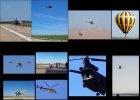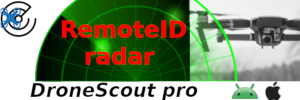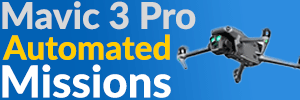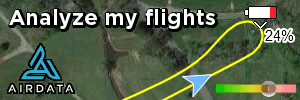Perfect analogy!!!!!Trusting ADS-B is like installing a Car Avoidance System in your car that only detects RED cars... then putting the car on Auto Pilot and not paying any attention to the road ahead.
You are using an out of date browser. It may not display this or other websites correctly.
You should upgrade or use an alternative browser.
You should upgrade or use an alternative browser.
Helicopter and Drone collision.
- Thread starter jaja6009
- Start date
Daytona500
Well-Known Member
If you'll dig into ADS-B you'll see the massive short comings it has. Last time I researched it, unless you're in an area no geographical issues (hills, mountains, valleys) close to an airport with controlled Airspace then ADS-B has significant delays and lapse of coverage. IIRC the "100% Coverage" rate was just under 30% in the USA.
Some Helicopters have ADS-B but depending on the area and type of flight it may or may NO be broadcasting. I don't know about Germany's laws but they are probably very similar to the US FAA and it's only require in some certain instances.
You'd be shocked at the amount of aircraft you are NOT seeing on your ADS-B and other flight apps unless you're next to a fairly large airport.
Trusting ADS-B is like installing a Car Avoidance System in your car that only detects RED cars... then putting the car on Auto Pilot and not paying any attention to the road ahead. That's what relying on ADS-B to alert you to every aircraft is going to do.
It's ironic that the aircraft more likely to be broadcasting ADS-B are generally less likely to pose a problem for drones - they're often heavy movers high up and they're down on our level only near airports. The aircraft least likely to be broadcasting are the ones we're most likely to encounter - VFR general aviation, helicopters, crop dusters, paramotors, sightseers, ...
AnzacJack
Australian Defence Veteran
it’s been said but I’ll repeat
Situation awareness is absolute priority
If you hear a helicopter but don’t know where it is, then I would absolutely say you should land immediately
Situation awareness is absolute priority
If you hear a helicopter but don’t know where it is, then I would absolutely say you should land immediately
Agreed, I definitely start to descend immediately regardless (since I don't want the manned aircraft to even spot my drone at altitude) but I stop short of landing because if I get too low, I may lose signal and trigger the RTH which will cause the drone to rise and also I may not have enough time to checkout for sure what I am landing upon. The last thing I want to do is land in someone's backyard or in an intersection or in a lake. So I often descend to about 20 feet AGL and that should be sufficient while I wait out the 2 - 3 minutes it sometimes take for these manned aircraft to make themselves known. If I'm low on battery and near home, I'll land at that point and call it a session until it is clear. My AO is not known for super low flying aircraft since there are too many 80 feet or less structures in the vicinity. I'm near a small airport and my neighborhood will complain if those aircraft get too low too soon.it’s been said but I’ll repeat
Situation awareness is absolute priority
If you hear a helicopter but don’t know where it is, then I would absolutely say you should land immediately
I hate to say it because we take so much flak on this forum for speaking the truth but when I am FPV and flying in and around obstacles no more than 20 feet off the ground and I get the "aircraft nearby" warning, to me that means stay at 20 feet or less (in the meantime) but keep doing what you are doing. However, when I get the audible alert, I'll pause and make sure I (or spotter) can see the aircraft.
dronerdave
Well-Known Member
Well, I don't want to comment on this particular incident, but I (legally) fly RC off small active/private runways weekly. These are FRIA sites with an understanding between the club and those running the airports. Sometimes we have to share the site with full size aircraft. I think it's up to the RC pilot to assess the danger of flying around an active airport including understanding what can happen when loosing control of their RC aircraft. If you have manned aircraft in the area, you simply take the safest method to see and avoid. With the correct understanding, RC clubs have been flying off active runways for years without too many issues.
I have grabbed a few pictures of low flying visitors. None of these aircraft showed up on Flight-Radar.

I have grabbed a few pictures of low flying visitors. None of these aircraft showed up on Flight-Radar.

There seems to be a lot of confusion about the availability of ADS-B data via apps, websites or ADS-B receivers.If you'll dig into ADS-B you'll see the massive short comings it has. Last time I researched it, unless you're in an area no geographical issues (hills, mountains, valleys) close to an airport with controlled Airspace then ADS-B has significant delays and lapse of coverage. IIRC the "100% Coverage" rate was just under 30% in the USA.
Some Helicopters have ADS-B but depending on the area and type of flight it may or may NO be broadcasting. I don't know about Germany's laws but they are probably very similar to the US FAA and it's only require in some certain instances.
You'd be shocked at the amount of aircraft you are NOT seeing on your ADS-B and other flight apps unless you're next to a fairly large airport.
Trusting ADS-B is like installing a Car Avoidance System in your car that only detects RED cars... then putting the car on Auto Pilot and not paying any attention to the road ahead. That's what relying on ADS-B to alert you to every aircraft is going to do.
Data providers such as FlightAware, Flightradar24, ADS-B Exchange etc. can only display aircraft locations if they are receiving ADS-B broadcast by aircraft and received by ground-based receivers, or if they are in their primary radar feeds. So away from airports, below primary radar coverage, and if there are no local ground-based receivers, they simply won't have any data to display.
But aircraft that have ADS-B transponders will still be broadcasting whether anyone else is listening or not, and so an ADS-B receiver, such as those installed on all the later models of DJI equipment, will pick those up directly. So just because an aircraft isn't showing up on internet data feeds doesn't mean that an ADS-B equipped sUAS won't see it.
That just leaves the question of how many aircraft are broadcasting ADS-B. It's required in Class A, B and C airspace and in any Mode C veil. Some aircraft never fly in those classes of airspace and so don't require it, and it's possible that some pilots disable it when outside those kinds of airspace. And some military aircraft don't broadcast, although the fact that military flights generally don't appear on FlightAware and Flightradar24 is more often due to those companies filtering them out. ADS-B Exchange doesn't filter military, and they are visible on service.
CactusJackSlade
Well-Known Member
- Joined
- Oct 17, 2016
- Messages
- 1,086
- Reactions
- 846
I totally get it, but when you say "my airspace" keep in mind, as far as the FAA is concerned, drones are the lowest on the totem pole as far as who has right-of-wayI posted my experience with a low flying insect control helicopter. I was flying on one side of my house and couldn't hear the insect control heli coming at all. It was suddenly in my airspace. There were only about 5 seconds from hearing the heli and seeing it. I had no chance of maneuvering out of the way or landing in time. My house blocked the choppers noise until We almost hit.
EssenYVR
Well-Known Member
Back when I was flying my Cessna Cardinal I found it difficult to pick out other light aircraft in the traffic pattern, let alone something the size of a drone. If an object is at your altitude or below you it will disappear into the clutter of the background, especially if the relative courses are such that it doesn't have much apparent motion compared to what's behind it.We have the same exact Robinson R44 tourism helicopter in some of our heavy operations areas. And after speaking with the pilot, we always assumed that he could see our large M300RTK, and it turned out he could not always see it and at times never knew it was up and operating.
As drone pilots we all know how hard it is to spot our drone even at small distances of, say, a couple of hundred feet, despite it being above us against an uncluttered sky and forearmed with a knowledge of roughly where it should be.
Now imagine you're the pilot of an aircraft traveling 100 miles an hour, a pretty leisurely pace for most aircraft (helicopters included). It only takes a second or two to go 200 feet at that speed. That's nowhere near enough time to spot a small drone and avoid it.
This is why aircraft have the right of way. It's usually just not feasible for them to avoid our drones, and much, much easier for us to avoid them. The onus is on us to avoid collisions, even when we're operating completely within the bounds of the law.
Back when I was flying my Cessna Cardinal I found it difficult to pick out other light aircraft in the traffic pattern, let alone something the size of a drone. If an object is at your altitude or below you it will disappear into the clutter of the background, especially if the relative courses are such that it doesn't have much apparent motion compared to what's behind it.
As drone pilots we all know how hard it is to spot our drone even at small distances of, say, a couple of hundred feet, despite it being above us against an uncluttered sky and forearmed with a knowledge of roughly where it should be.
Now imagine you're the pilot of an aircraft traveling 100 miles an hour, a pretty leisurely pace for most aircraft (helicopters included). It only takes a second or two to go 200 feet at that speed. That's nowhere near enough time to spot a small drone and avoid it.
This is why aircraft have the right of way. It's usually just not feasible for them to avoid our drones, and much, much easier for us to avoid them. The onus is on us to avoid collisions, even when we're operating completely within the bounds of the law.
This is actually a very good point. When I am flying trying to spot another drone during training it is much easier to be below the other drone I am looking for or have a clear sky background.
AMann
Well-Known Member
This is true also when flying near a hill that you can’t see the other side of. In that case don’t fly higher than it as you won’t hear anything coming over it from the other side.First off WELCOME to the forum and thank you for sharing your experience. I had a similar one just a couple of months ago.
I will go on record stating something that is not going to "sit well" with the majority here on this forum (or in our community as a whole)....
If you're flying in such a way as to limit your visibility (trees, tall buildings etc) and unable to see/hear an approaching aircraft, then you're not flying SAFE and fully immersed in the See & Avoid concept. Keep in mind, it's our fundamental responsibility to See & Avoid at any cost.
StevenBrodsky
Well-Known Member
Interesting statement. The logic can be the same both ways. It's the same from the Manned aircraft pilot and the Drone pilot, UNLESSS THE DRONE PILOT HAS A COMPETE VIEW OF THE SKY. If a drone pilot has a full view of the sky, that pilot can avoid the manned aircraft, But If the drone pilot is flying in an area where the view of the surrounding sky is limited (houses, trees, buildings), he or she can have the same issue as the manned aircraft pilot, just reversed.Now imagine you're the pilot of an aircraft traveling 100 miles an hour, a pretty leisurely pace for most aircraft (helicopters included). It only takes a second or two to go 200 feet at that speed. That's nowhere near enough time to spot a small drone and avoid it.
Anyway, I still agree. It's the responsibility of the drone pilot to get out of the way of any manned aircraft.
I don't fly manned aircraft so I cannot say but why would a manned aircraft flying lower than 400 feet swerve or manuever to avoid a drone if he saw one at the last minute, especially if it's a *small* drone that he thinks may only cause minor damage should there be a collision? Meaning making abrupt changes to the flight path that could put the aircraft in danger. Do you also take the same steps when you see birds? You're 200 feet off the ground and you try to miss every bird you see? As long as the drone is at fault, why bother to miss it if you can't help it?
I'm thinking about driving a car where if someone is changing lanes and they don't come into contact with you and you swerve to miss them in order to avoid what you believe may be a collision, if you leave the roadway and you crash your car, the other driver isn't necessarily at fault if he never touched you....depends on the circumstances. Imagine if you are driving and the other guy was always at fault should you collide, how would that change your diving habits? If the manned pilot dodged the drone and crashed, would the drone pilot still be at fault automatically despite no collision?
The drone pilot must keep his drone out of danger at all times under all circumstances, I don't think you can count on getting a lot of help from the manned pilot.
I'm thinking about driving a car where if someone is changing lanes and they don't come into contact with you and you swerve to miss them in order to avoid what you believe may be a collision, if you leave the roadway and you crash your car, the other driver isn't necessarily at fault if he never touched you....depends on the circumstances. Imagine if you are driving and the other guy was always at fault should you collide, how would that change your diving habits? If the manned pilot dodged the drone and crashed, would the drone pilot still be at fault automatically despite no collision?
The drone pilot must keep his drone out of danger at all times under all circumstances, I don't think you can count on getting a lot of help from the manned pilot.
You bring up an excellent point, I would like to see the final report with all the details. I am reminded that in most motor vehicle handbooks (DMV) that drivers are responsible for their vehicles. We all know that regardless of the laws, if conditions are other than ideal we have to take extra care by using good judgement and when in doubt always stay on the safe side if possible and regardless of what the law is under negative conditions. I cannot imagine the horror of accidentally bringing down an aircraft and for me if an issue develops then land. Well, as long as the issue isn't directly below you. Hope to see more on this event but thankfully nobody was physically injured.I don't fly manned aircraft so I cannot say but why would a manned aircraft flying lower than 400 feet swerve or manuever to avoid a drone if he saw one at the last minute, especially if it's a *small* drone that he thinks may only cause minor damage should there be a collision? Meaning making abrupt changes to the flight path that could put the aircraft in danger. Do you also take the same steps when you see birds? You're 200 feet off the ground and you try to miss every bird you see? As long as the drone is at fault, why bother to miss it if you can't help it?
I'm thinking about driving a car where if someone is changing lanes and they don't come into contact with you and you swerve to miss them in order to avoid what you believe may be a collision, if you leave the roadway and you crash your car, the other driver isn't necessarily at fault if he never touched you....depends on the circumstances. Imagine if you are driving and the other guy was always at fault should you collide, how would that change your diving habits? If the manned pilot dodged the drone and crashed, would the drone pilot still be at fault automatically despite no collision?
The drone pilot must keep his drone out of danger at all times under all circumstances, I don't think you can count on getting a lot of help from the manned pilot.
EssenYVR
Well-Known Member
I agree. It's my opinion that having a good view of the big-picture environment around your drone is more important than having a good view of the drone itself. If you're aware of potential conflicts you can take evasive action (such as descending to avoid the conflict) even if you can't immediately see the drone.Interesting statement. The logic can be the same both ways. It's the same from the Manned aircraft pilot and the Drone pilot, UNLESSS THE DRONE PILOT HAS A COMPETE VIEW OF THE SKY. If a drone pilot has a full view of the sky, that pilot can avoid the manned aircraft, But If the drone pilot is flying in an area where the view of the surrounding sky is limited (houses, trees, buildings), he or she can have the same issue as the manned aircraft pilot, just reversed.
StevenBrodsky
Well-Known Member
Exactly right. For example, large fields with no trees, desert type terrain, large open parks, beaches, lakes and oceans, etc are safer places to fly than in the middle of a housing complex or a small clearing in the middle of the woods.I agree. It's my opinion that having a good view of the big-picture environment around your drone is more important than having a good view of the drone itself. If you're aware of potential conflicts you can take evasive action (such as descending to avoid the conflict) even if you can't immediately see the drone.
The NTSB released the final report on this accident today.
From the report:
From the report:
Link to Docket: NTSB Docket - Docket Management SystemAnalysis
The pilot of the helicopter reported that while flying at an indicated altitude around 200 to 300 ft, while on approach to land at an off-airport landing zone, he saw a black “drone” [unmanned aerial system (UAS)] in front of his windscreen. He attempted to avoid the UAS but was unable and the UAS impacted the main rotor resulting in substantial damage to a main rotor blade. The pilot reported that there were no preaccident mechanical malfunctions or failures with the helicopter that would have precluded normal operation.
The UAS operator reported that he was conducting operations over a construction site. The area was inside of the class C airspace of a nearby airport and the UAS operator was using a Federal Aviation Administration Certificate of wavier or authorization (COA) that had been previously obtained by the construction company who hired him. The UAS operator reported that he was flying at an altitude of 180 ft, and that before the flight he had not realized that this altitude was above the maximum altitude of 150 ft imposed by the COA. The COA also required the UAS operator to notify the air traffic control tower at the nearby airport at least 15 minutes prior to the proposed start time of any operations. The UAS operator stated, and a review by the of contact records by the air traffic control tower confirmed, that no call was received from the UAS operator notifying them of the operation.
Probable Cause and Findings
The National Transportation Safety Board determines the probable cause(s) of this accident to be: The UAS operator’s failure to operate within the limitations of the COA that he was using to operate inside class C airspace, which resulted in a collision between the UAS and the helicopter.
BobaFut
Well-Known Member
I was willing to withhold judgment and give this person the benefit of the doubt in terms of being at fault in the causative sense, but the UAS pilot was clearly negligent and caused this collision. Even if he had just called the tower before launching this might have been avoided. Also, no matter how serious you take altitude restrictions in Class G airspace or whatever, to violate a COA in Class C when *you're on a job* is so stupid I can barely believe it.The NTSB released the final report on this accident today.
From the report:
Link to Docket: NTSB Docket - Docket Management System
StevenBrodsky
Well-Known Member
Wow. I'm in shock. More so, in shock, because the pilot of the UAV had prepped and legitimized his flight, and then he goes and breaks rules he had prepped for in the first place.
Similar threads
- Replies
- 16
- Views
- 1K
- Replies
- 35
- Views
- 1K
DJI Drone Deals
New Threads
-
Last Week's Most Popular Topics (December 6, 2025)
- Started by msinger
- Replies: 0
-
-
-
Where to buy recently released DJI drones from the US (updated daily)
- Started by msinger
- Replies: 2
-











